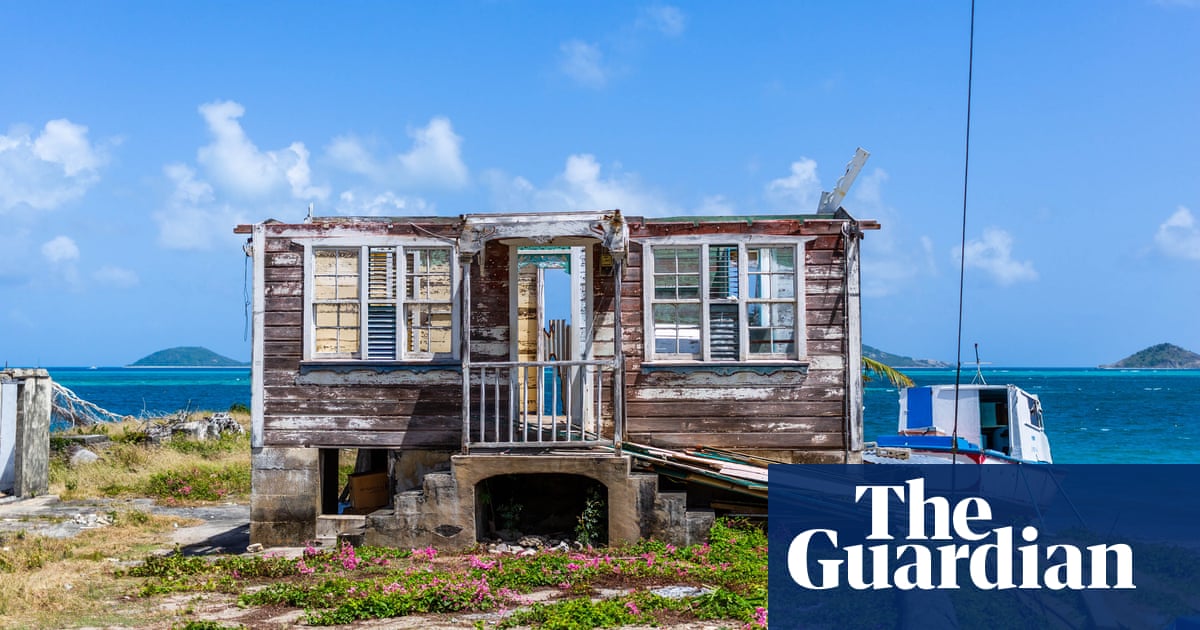Hurricane Beryl struck Grenada last June, wreaking havoc on its landscapes and communities. Prime Minister Dickon Mitchell called it a disaster of “Armageddon-like” proportions. On the island of Carriacou, more than 90% of the structures were either damaged or destroyed. Key infrastructure like electricity and communication systems also faced near-total destruction.
Almost a year later, signs of recovery are visible, but the scars remain. Buildings stand hollow, and many people still reside in temporary shelters. Two artists, Michael Alexander and Yolanda VendenDunden, made their home in a tent on the remnants of their house, lost to the hurricane. They describe their experience as shocking—much worse than they had anticipated.
“The roof started shaking, and suddenly the walls came down,” recalled Alexander. They managed to survive but lost everything, forcing them to adapt to a new life in a tent. Alexander built a makeshift kitchen and bathroom to provide Yolanda with some privacy. However, the tent offers little protection from the intense Caribbean heat, and local farmers have reported worsening drought conditions, with each year becoming more challenging.
Gifford Andrew, a local farmer, expressed his frustrations: “I lost everything in Beryl. Now, I’m facing droughts that get worse every year. It’s hard to grow anything.” Such conditions stem directly from a combination of hurricanes and water shortages, creating a grim situation for farmers.
Carriacou faces dire environmental challenges due to climate change, highlighted by Davon Baker, an environmentalist in the region. “We lose beach space each year as sea levels rise, and dry seasons have become more extreme,” he said. These changes threaten the island’s agricultural future.
In response to these challenges, Grenada’s government is pushing for more support from wealthier nations, claiming they have profited from pollution and environmental neglect. The island also joined a landmark legal case aimed at holding polluting countries accountable for climate damage.
Interestingly, this plea for environmental justice coincides with movements for reparations linked to the transatlantic slave trade. More than 12.5 million Africans were forcibly taken to the Americas, and leaders in the Caribbean argue that the impacts of slavery continue to affect their nations today.
Arley Gill, who leads the Grenada Reparations Commission, explained the connection. He notes that the Industrial Revolution—rooted in the exploitation of slaves—has led to the climate crisis we see today. “The raw materials produced by enslaved people fueled the wealth of Europe. However, that same history has left the Caribbean struggling with the consequences of climate change,” he argued.
Tevin Andrews, the minister for Carriacou and Petite Martinique, shared his deep concerns about the community’s future. After losing a close friend to the hurricane, he emphasized the island’s ongoing struggle for survival. “Every year from July to December, we pray that we don’t face another disaster,” he said. He lamented the slow response from wealthier nations, remarking, “They built their success on our backs and left us vulnerable.”
The ongoing struggles against climate change and the call for reparative justice are more interconnected than ever. Without significant changes and support from the global community, the future looks uncertain for those living in the Caribbean islands, where climate impacts continue to escalate.
For further reading about how ecological issues intersect with historical injustices, you can explore this article.




















